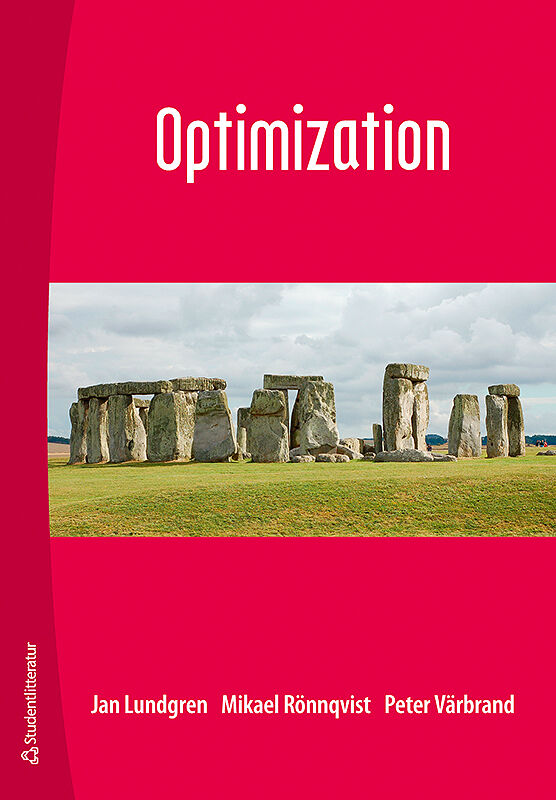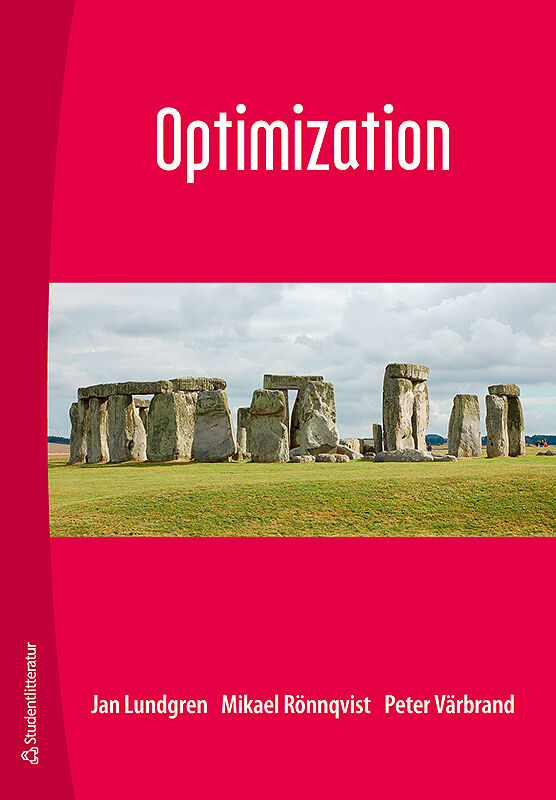
Optimization

Optimization
Den här boken finns tillgänglig som e-bok på Studora.
På Studora kan du köpa tidsbegränsad åtkomst till denna och många andra e-böcker. Du får tillgång direkt och kan även ta del av tjänstens smarta studieverktyg.
Innehållsförteckning
Information
- Författare:
- Jan Lundgren Mikael Rönnqvist Peter Värbrand
- Språk:
- Engelska
- ISBN:
- 9789144053080
- Utgivningsår:
- 2010
- Artikelnummer:
- 33254-01
- Upplaga:
- Första
- Sidantal:
- 548
Innehållsförteckning
Information
- Författare:
- Jan Lundgren Mikael Rönnqvist Peter Värbrand
- Språk:
- Engelska
- ISBN:
- 9789144171524
- Utgivningsår:
- 2010
- Artikelnummer:
- 33254-SB01
- Upplaga:
- Första
